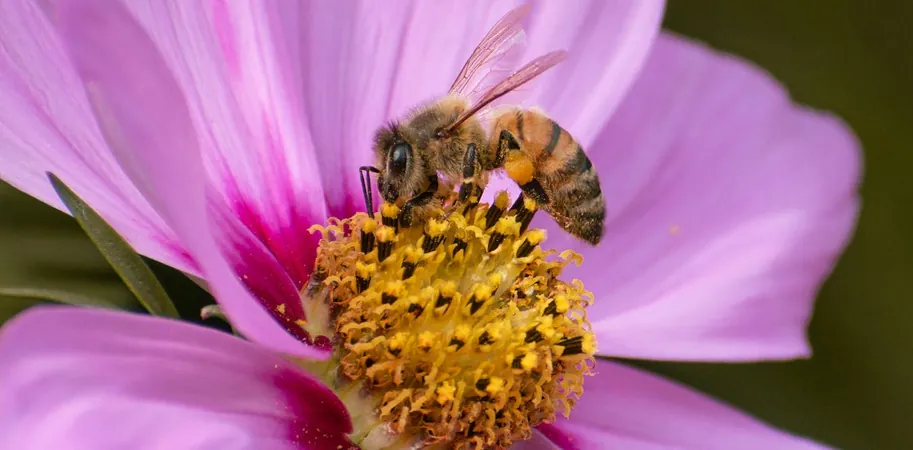
A New Threat to Honey Bees: The Deadly Tropilaelaps Mite Spreads Globally
2025-09-10
Author: Sarah
For years, beekeepers have battled the notorious Varroa destructor, a parasite that has devastated honey bee populations across the globe. Now, a new menace has emerged: the Tropilaelaps mercedesae, commonly referred to as 'tropi.' This frightening mite is feared to cause even greater destruction than varroa, with potential consequences that could impact billions who rely on honey bee-pollinated crops.
The Global March of Tropi
Originally, tropi thrived among giant honey bees (Apis dorsata), predominantly found in South and Southeast Asia. However, this parasite has made a catastrophic leap to the western honey bee (Apis mellifera), the species most commonly managed by beekeepers worldwide. As a result, its spread is now reaching alarming new territories, detected in Ukraine, Georgia, and southern Russia, with suspicions of its presence in Iran and Turkey. Experts predict it could soon invade eastern Europe and may also threaten Australia and North America.
Why Does Tropi Spread So Quickly?
Similar to varroa, tropi breeds within capped brood cells—sealed sections of honeycomb where bee larvae grow. But here’s where the comparison gets alarming: while varroa can linger for extended periods on adult bees, tropi can't survive outside these brood cells for long. This means it is constantly on the hunt for new larvae, reproducing at an alarming rate. A single tropi-infested brood cell can yield more offspring faster than a varroa-infested cell, potentially overwhelming whole colonies in mere moments.
Current Control Measures
In regions of Asia where tropi has already taken hold, beekeepers manage its spread by caging the queen for about five weeks, preventing egg-laying and thus depriving the mites of their food source. This method is manageable for smaller operations, but for large-scale beekeeping in Europe, where thousands of hives are the norm, it becomes impractical.
Another strategy involves using formic acid, which can penetrate brood cells to kill mites without harming the developing bees, given careful concentration monitoring. However, even with these measures, battling tropi remains incredibly challenging.
Why Traditional Varroa Treatments Fail
Beekeepers have long wondered if the chemicals used to combat varroa could work against tropi. Unfortunately, the answer is primarily no. Varroa is often found on adult bees, allowing it to come into contact with miticides, whereas tropi skitters across combs, avoiding direct exposure to these treatments.
Managing both parasites simultaneously complicates matters, as treatments for one can interfere with the other, potentially harming bees and contaminating honey. Moreover, the risk of developing resistant strains from overuse of existing treatments poses an additional hurdle, leaving beekeepers with dwindling options.



 Brasil (PT)
Brasil (PT)
 Canada (EN)
Canada (EN)
 Chile (ES)
Chile (ES)
 Česko (CS)
Česko (CS)
 대한민국 (KO)
대한민국 (KO)
 España (ES)
España (ES)
 France (FR)
France (FR)
 Hong Kong (EN)
Hong Kong (EN)
 Italia (IT)
Italia (IT)
 日本 (JA)
日本 (JA)
 Magyarország (HU)
Magyarország (HU)
 Norge (NO)
Norge (NO)
 Polska (PL)
Polska (PL)
 Schweiz (DE)
Schweiz (DE)
 Singapore (EN)
Singapore (EN)
 Sverige (SV)
Sverige (SV)
 Suomi (FI)
Suomi (FI)
 Türkiye (TR)
Türkiye (TR)
 الإمارات العربية المتحدة (AR)
الإمارات العربية المتحدة (AR)